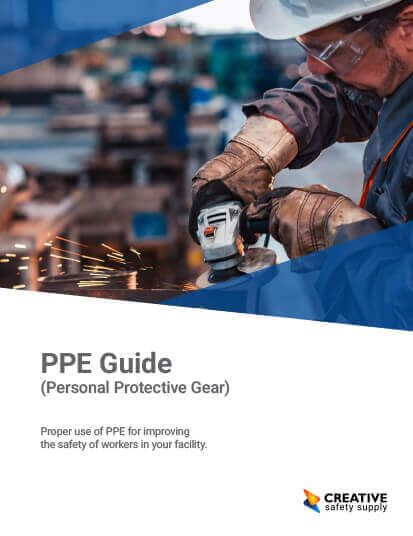
Some hazards are easily spotted, and some hazards can seem hidden. It is important for safety or facility managers to carefully inspect the facility to identify hazards in the workplaces and areas where potential hazards could occur and purchase properly fitting and appropriate PPE.
Personal protective equipment is designed to protect employees from all types of hazards that can be found in a manufacturing facility, a construction site, or an industrial workplace. PPE protects workers from a variety of hazards including chemical, physical, biological, electrical, mechanical and radiological hazards. PPE can range from ear muffs that will prevent permanent hearing damage or a hi-vis safety vest to alert forklift drivers of their presence. Forms of PPE can keep workers from falling to their death, protect the wearer from catching on fire, and even from burning off their corneas.
Some common hazards that can be found in the workplace include the following:
- Forklifts in the workplace can result in a pedestrian being struck and injured. Recommended PPE – High visibility vests.
- Electrical panel are an area that poses the risk of an arc flash incident. Recommended PPE – Corresponding arc-rated clothing.
- Sharp objects on machines or in the facility are a dangerous hazard to hands. Recommended PPE – Safety gloves.
- Flammable liquids pose a fire hazard and can be a dangerous chemical. Recommended PPE – Flame-resistant clothing.
- Lasers are a hazard to the eyes that can result in permanent damage. Recommended PPE – Safety glasses.
Many different levels of PPE exist as well. For example, an arc flash suit jacket and an arc-rated long sleeve shirt both protect the worker from arc flash, the former is required for higher voltage situations. Some gloves can protect from more simple hazards like chafing, to more intense ones like synthetic rubber will protect from corrosive acids. Training of employees needs to cover areas and times that require PPE to be worn.
Similar Questions
- What PPE can protect a worker from electrocution?
- What are different types of PPE?
- What is PPE?
- What PPE is commonly used in construction sites?
- What does PPE stand for?
- What situations require PPE?
- What PPE is recommended for chemical hazards?
- Why is PPE considered the last resort?
- Can PPE be shared, reused, or altered?
